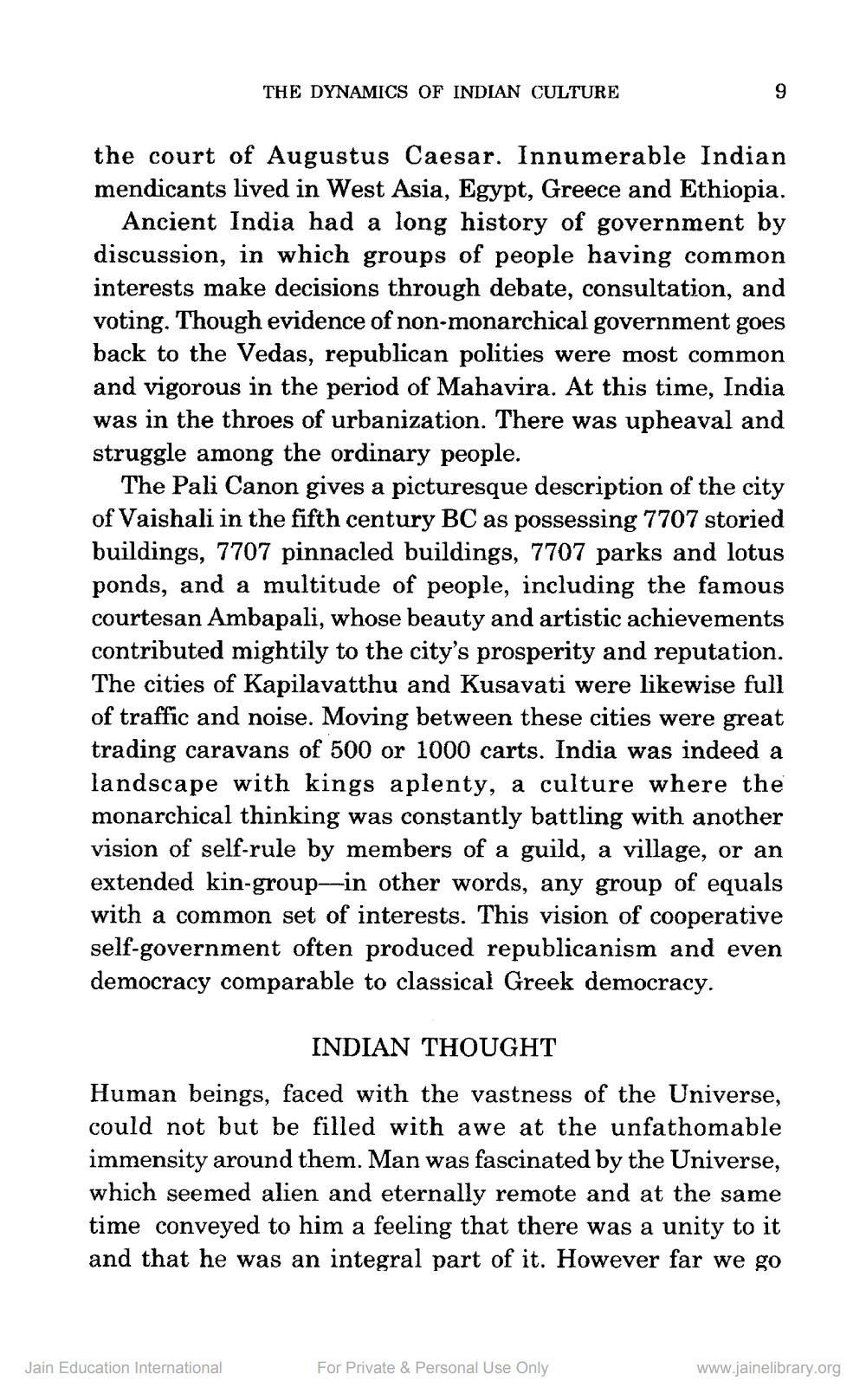________________
THE DYNAMICS OF INDIAN CULTURE
the court of Augustus Caesar. Innumerable Indian mendicants lived in West Asia, Egypt, Greece and Ethiopia.
Ancient India had a long history of government by discussion, in which groups of people having common interests make decisions through debate, consultation, and voting. Though evidence of non-monarchical government goes back to the Vedas, republican polities were most common and vigorous in the period of Mahavira. At this time, India was in the throes of urbanization. There was upheaval and struggle among the ordinary people.
The Pali Canon gives a picturesque description of the city of Vaishali in the fifth century BC as possessing 7707 storied buildings, 7707 pinnacled buildings, 7707 parks and lotus ponds, and a multitude of people, including the famous courtesan Ambapali, whose beauty and artistic achievements contributed mightily to the city's prosperity and reputation. The cities of Kapilavatthu and Kusavati were likewise full of traffic and noise. Moving between these cities were great trading caravans of 500 or 1000 carts. India was indeed a landscape with kings aplenty, a culture where the monarchical thinking was constantly battling with another vision of self-rule by members of a guild, a village, or an extended kin-group-in other words, any group of equals with a common set of interests. This vision of cooperative self-government often produced republicanism and even democracy comparable to classical Greek democracy.
INDIAN THOUGHT Human beings, faced with the vastness of the Universe, could not but be filled with awe at the unfathomable immensity around them. Man was fascinated by the Universe, which seemed alien and eternally remote and at the same time conveyed to him a feeling that there was a unity to it and that he was an integral part of it. However far we go
Jain Education International
For Private & Personal Use Only
www.jainelibrary.org




